Understandably, salt has always been a common household item primarily added as a solution or directly to the meat to flavor it. But this article will determine the difference between the two typically used salt forms, Dry brine Vs. Wet brine.
Salt can be utilized in various forms, and as long as it has been around throughout the household kitchen item, salt has surely made leaves, meat, roots, and vegetables taste better. From the flavor to numerous other advantages, such as food preservation before modern technology (refrigerator), salt has played a fundamental role in cooking.
However, how can salt be used optimally to cook a turkey, and what application process is better- dry brine Vs. Wet brine is the major focus of the following discussion.
Dry Brine Vs. Wet Brine
The magic of brining is all attributed to salt. Other flavorings like citrus zest, spices, and sugar can also be used to brine, but they all stand as ancillary before salt. What significantly differs in dry brine Vs. Wet brine is how the salt works.
Whether dry brine vs. wet brine, the meat will be infused with salt when cooking a turkey to break down the protein strands in the bird’s muscles so that water can be absorbed.
Subsequently, during cooking, grilling, or smoking, the turkey’s muscles will not contract as the salt is keen at destroying protein strands, ensuring a reduced liquid amount is expelled, and the majority of the moisture is retained, allowing you to have a showstopper juicy, delicious turkey on your Thanksgiving dinner table!
Dry Brine
Defining a dry brine is to apply salt to the meat’s surface to add flavor inside the meat, helping it further lock in the already present moisture. Usually, for this purpose, kosher salt is used at a rate of 1/2 or 3/4 teaspoon per pound of meat.
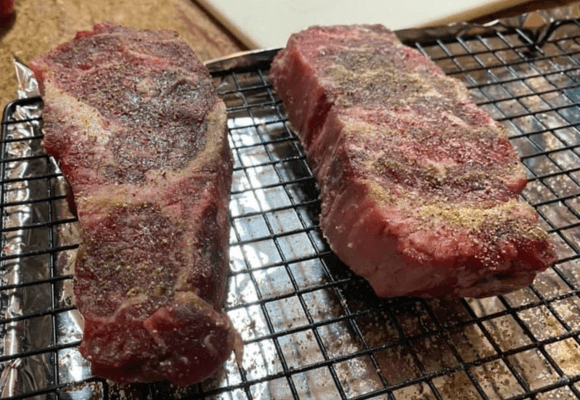
According to the weight of the meat, the salt requirements are subject to variation, so dry brine the meat appropriately.
Wet Brine
Wet brine first forms a solution of liquid and salt, possibly other ingredients included if further moisture and flavor are preferred. Then, after forming the solution, soak the chicken, meat, and fish in a wet brine.
The standard ratio used to formulate a wet brine is 1 cup of kosher salt dissolved in 1 gallon of liquid, which is water.
Which One Is Better?
Both brining techniques are widely used and very effective but change per the demands of the meat to be brined. For example, wet brining works best on meat that is more delicate and lean, such as seafood, fish, or poultry.
In comparison, dry brining is ideal for more robust and fattier cuts of meat like lamb, pork, and beef, which is also inclusive of the game- elk, deer, etc.

Nevertheless, when the decision narrows down to dry brine Vs wet brine, complexity can be eliminated by focusing on just a handful of factors.
Moisture Or Flavor?
What is your aim of brining, and what is specifically of interest to you- infusing flavor into turkey or adding more moisture? Your interest in your bird will be deciding whether you should go ahead with a dry brine Vs. Wet brine.
Surely, more moisture to the meat will only be added through a wet brine. But a dry brine will impart an intense, much richer flavor directly into the internals of the meat through the close contact between the turkey meat and the dry salt mixture rubbed onto the turkey’s surface.
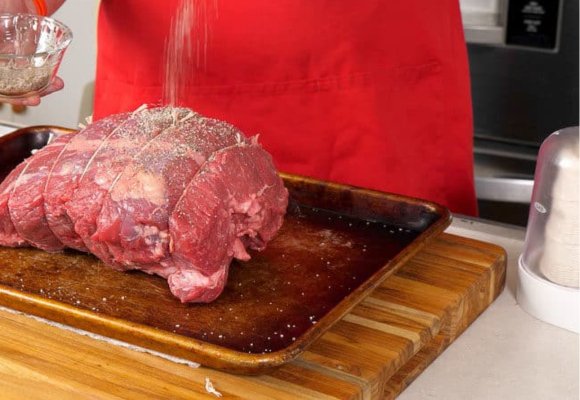
While a moist and juicy turkey as an outcome of wet brining sounds great, the problem is that the turkey can become a bit watery; otherwise, it can be “very juicy.” Also, the turkey will only pick up minimal flavor from the imparted aromas of homemade chicken stock, so wet brine in this situation seems ideal.
Regardless, the decision is yours to make, and what will help is knowing the kind of turkey you want to prepare- flavorful or juicy.
Demand Of Space
Turkey is a huge bird that must be stored using both brining techniques and needs a valuable shelf space. Still, when your refrigerator space is limited, dry brine is your best friend.
The difference between dry and wet brine is that the turkey will be stored only for a dry brine. No additional things will be stored along with the turkey, which is stored in a wet brine, such as a vessel of salt water, a large bucket, or raw turkey juices.
Comparatively, when storing a turkey brined through the wet brine technique, you must store the turkey in the fridge fully submerged in a saltwater bucket or a large pot. Another advantage of wet brine is that it can be retracted using the alternative of brining the turkey outside the refrigerator.
For this, you will need a cooler and, at all times, would have to monitor the cooler’s temperature carefully so that it does not go beyond 40 degrees, or else the turkey can be spoiled.
Level of Comfort
An aspect that most people do not consider is the comfort level of the brining processes. Wet brining of turkey comes with an “ick” factor, which is not for the squeamish because you will be managing a slimy bird submerged in the swirl of brine and other meat juices.
On the other hand, dry brine is a much more simplified procedure that is clean and tidy, whereby you only have to take the turkey out of the package, pat it dry, apply it, rub it dry, and brine it over the bird.
Brining A Turkey
Wet Brining
Wet brining a turkey or another kind of meat has one general rule of thumb, which must be abided by, and that is for the brining solution, one cup of sugar and kosher salt per gallon of water is needed.
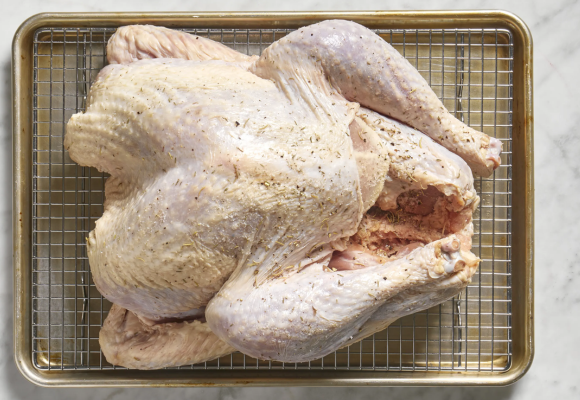
Again, where the turkey is heavy, and its weight is around 8-12 pounds, then increase the quantities and use at least two gallons of water with slightly enhanced quantities of sugar and salt to completely submerge the bird into the wet brine.
Water, sugar, salt, and aromas of your choice must be boiled in a huge container until they all dissolve, forming a brine solution.
Then, completely cool down the solution. In a large food-grade plastic container or a stainless steel pot, transfer the turkey, ensuring the breast side of the bird is downward facing, and then pour the cooled brine solution over the turkey.
Make sure the brine is enough to submerge the turkey, and for the final step, cover the pot and store it away in the fridge until further cooking is necessary.
Dry Brining
Before you begin dry brining your turkey, pat dry the turkey with a paper towel or any other material that you think is suitable for pat drying. All that is needed to be done for a dry brine of the turkey is to rub kosher salt over the turkey in a generous amount and then let it rest in the refrigerator without a lid, uncovered, till it’s required for cooking.
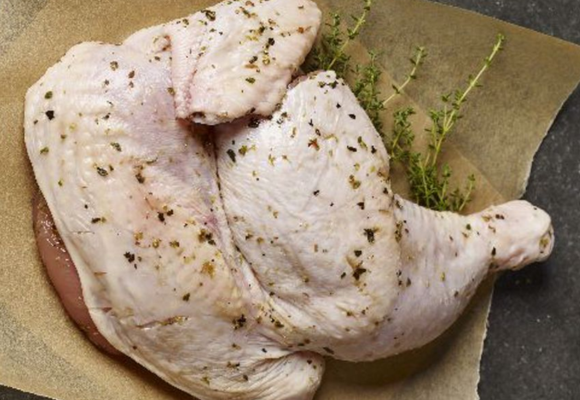
Storing a dry-brined turkey in a refrigerator makes the skin dry, so when cooked, it turns deep golden and becomes shatteringly crisp.
In addition to salt, spices, and herbs can be added to dry brining to amplify the plain salt’s flavor. Previously, we stated dry brining is used for adding flavor to turkey, and with other items of your choice, such as rosemary, thyme, pepper, sage, and garlic powder, you can have a much more flavorful cooked turkey for yourself.
Verdict On Brining
Up until now, we have seen the brining techniques (dry brine Vs. wet brine) changing in compliance with the demands and the cook’s needs. However, nine times out of a total of ten, nine people opt for dry brining.
The underlying reason relates to the ease that is offered with dry brining:
- No liquid is added
- Ingredients caramelize and crisp turkey quickly and readily
Despite the evident convenience of a dry brine, a handful of people still bother with a wet brine, and this is because when a turkey is submerged in a liquid of proteins for an extended span, it thoroughly tenderizes and seasons the meat, which can prove to be exceptionally helpful and effective for pork and poultry cuts that are dry and lean.
Moreover, any liquid starting from water, ranging from apple juice and buttermilk, can be used for wet brining, and since it is faster and has a high liquid proportion, the brining results in yielding juicier and higher protein meat.
In some situations, the extra moisture is added voluntarily because a liquid brine helps season and soften the dense vegetables simultaneously, ensuring they can be grilled without burning.
However, wet brine is not the way for someone desiring a crispy turkey, as it can make the meat too juicy and waterlogged.
Wet Brining And It’s Problems
Let’s all be honest: wet brining is not as easy as it may initially seem and has to be planned quite a bit, leading to certain problems:
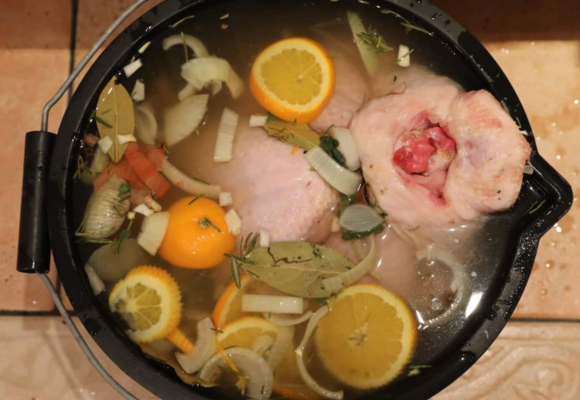
- A large enough container is needed to contain the brining solution and later submerge the turkey.
- A huge refrigerator space must be free to accommodate the turkey for at least twelve to twenty-four hours. This can be avoided if you are willing to invest in purchasing lots of ice and a high-quality, reliable cooler.
- You have to be content with wet brining a turkey, which could be slimy and an ick. Likewise, before brining the turkey, it has to be patted to crisp properly when roasted.
- The brining liquid must be disposed of cautiously to ensure bacteria is not splashed everywhere.
- Wet brine only adds moisture to the meat and is unrelated to flavoring the turkey. Aromatics may be added to the brine, but that does not absorb into the meat to impart a flavor.
Conclusion
We have comprehensively determined the difference between dry brine Vs. Wet brine. While both brining techniques are very useful and valuable, it must be kept in mind that the two serve a particular purpose.
When dry brining is for adding flavor, wet brining’s sole purpose is to add moisture. With this distinction in mind, deciding between dry brine vs. wet brine is relatively easy.
Frequently Asked Questions
Which is better, wet or dry brine?
If you want flavor in meat, then dry brine; otherwise, for adding moisture and tenderness, go for wet brine. Ultimately, the “better” method depends on your specific circumstances and preferences. Both methods, when done correctly, can yield delicious and flavorful results.
Does dry brining make a difference?
Yes, it adds a lot of flavor to the turkey for cooking. Dry brining can make a significant difference in the flavor and as well of texture of meat. Dry brining involves the rubbing salt (and sometimes other seasonings) directly onto the meat and allowing it to rest for a period before cooking.
What is the purpose of a wet brine?
The purpose of a wet brine is to ensure that liquid is not expelled but is retained in the turkey. Wet brining involves soaking the meat in a solution of water, salt, and often other flavorings like sugar, herbs, and spices.
How long should you wet brine?
The duration of a wet brine can vary depending on the type of meat and the desired level of flavor and moisture. Generally, for smaller cuts of meat like chicken breasts or pork chops, a brine time of 30 minutes to a few hours is sufficient and generally that is also Preferably, one hour per pound. For larger cuts like whole chickens or turkey, it’s recommended to brine for at least 4 hours and up to 24 hours. However, it’s important not to over-brine, as this can result in overly salty meat. Always refrigerate meat while it’s brining.
